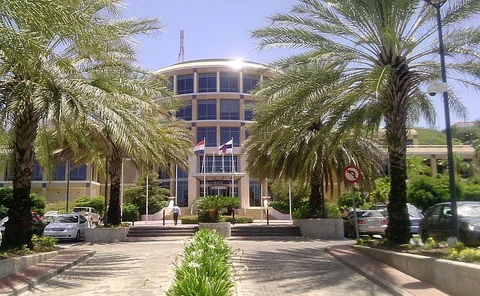Curaçao has a well-developed and regulated banking industry, shaped by its historical ties to the Netherlands, strong offshore financial services sector, and a strategic location in the Caribbean. Here’s an overview of the banking sector in Curaçao:
1. Central Bank of Curaçao and Sint Maarten (CBCS)
- Role: Regulator and monetary authority for both Curaçao and Sint Maarten.
- Functions:
- Issues currency (Netherlands Antillean guilder – ANG)
- Oversees monetary policy, banking supervision, and financial stability
- Regulates commercial banks, insurance companies, and pension funds
- Website: www.centralbank.cw
2. Types of Banks
Curaçao’s banking industry includes both domestic and international financial institutions:
a. Commercial Banks
- Serve individuals, businesses, and government.
- Offer services such as:
- Checking/savings accounts
- Loans and mortgages
- Online and mobile banking
- Foreign exchange
Major Commercial Banks:
- Banco di Caribe
- Maduro & Curiel’s Bank (MCB) – The largest local bank
- Orco Bank
- RBC Royal Bank – Canadian-based bank with a regional presence
b. Offshore/International Banks
- Offer services to non-residents, often in foreign currencies (especially USD and EUR).
- Attract clients seeking asset protection, wealth management, and international business structures.
- Once a booming sector, now tightly regulated due to global transparency standards.
3. Financial Services Industry
Curaçao has long been a regional financial services hub, offering:
- Trust services
- Investment funds
- Insurance and reinsurance
- International business companies (IBCs)
While the sector has declined somewhat due to international pressure on offshore jurisdictions, Curaçao is transitioning toward compliance and transparency under OECD and EU guidelines.
4. Currency and Exchange
- Local Currency: Netherlands Antillean Guilder (ANG)
- Pegged to: U.S. Dollar (1 USD = 1.79 ANG)
- U.S. dollars are widely accepted on the island.
- Foreign exchange services are provided by commercial banks and cambio (exchange offices).
5. Digital & Fintech Trends
- Growing use of online banking and mobile payments.
- Some banks are exploring digital wallets and contactless payment systems.
- Crypto regulation: The Central Bank is cautious but exploring ways to regulate digital assets while minimizing financial crime risks.
6. Regulation & Compliance
- Banks must comply with:
- Anti-Money Laundering (AML) laws
- Know Your Customer (KYC) regulations
- International Financial Reporting Standards (IFRS)
- Curaçao is subject to international financial scrutiny and has worked to exit blacklists by adopting stricter regulatory frameworks.
7. Challenges Facing the Sector
- De-risking: Some international banks have cut ties with Caribbean banks due to compliance burdens.
- Global competition from other offshore centers and tightening rules
- Digital disruption: Need to modernize and compete with fintech platforms
8. Strengths
- Stable legal and regulatory environment
- EU and Dutch connections support credibility
- Multilingual workforce (Dutch, English, Spanish, Papiamentu)
- Strategic location for regional banking and finance
Summary Table
| Sector | Key Institutions | Notes |
|---|---|---|
| Central Bank | CBCS | Regulates Curaçao & Sint Maarten |
| Retail/Commercial | MCB, RBC, Banco di Caribe, Orco Bank | Serve local individuals & businesses |
| Offshore/Private | Several international banks | Now more regulated due to global standards |
| Currency | ANG (pegged to USD) | USD widely used |
| Financial Services | Trusts, investment funds, insurance | Curaçao is a financial services hub |



